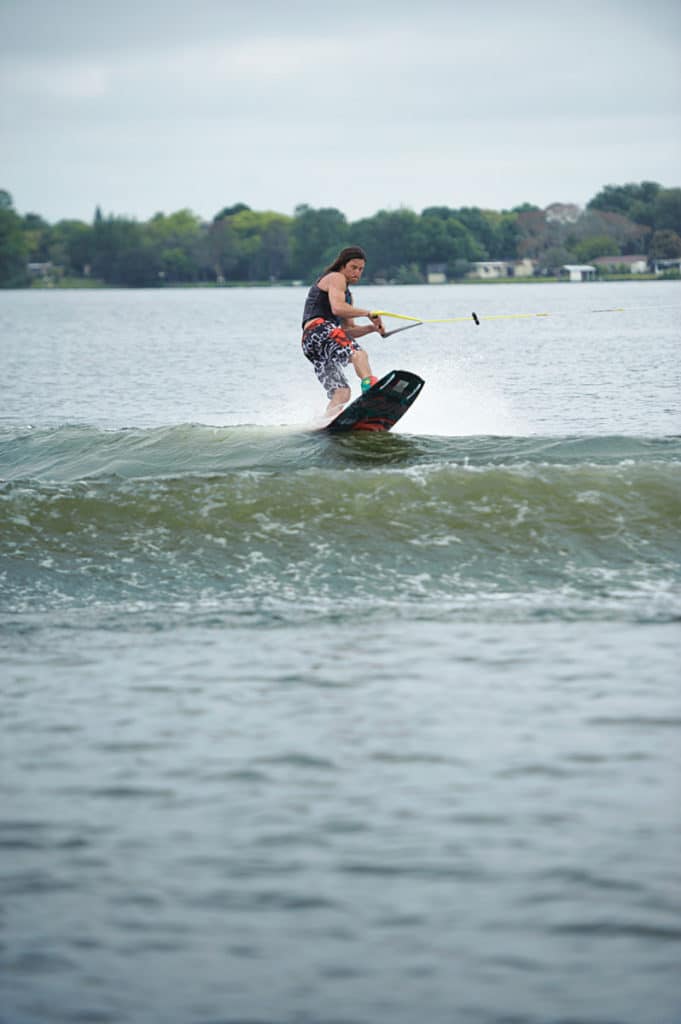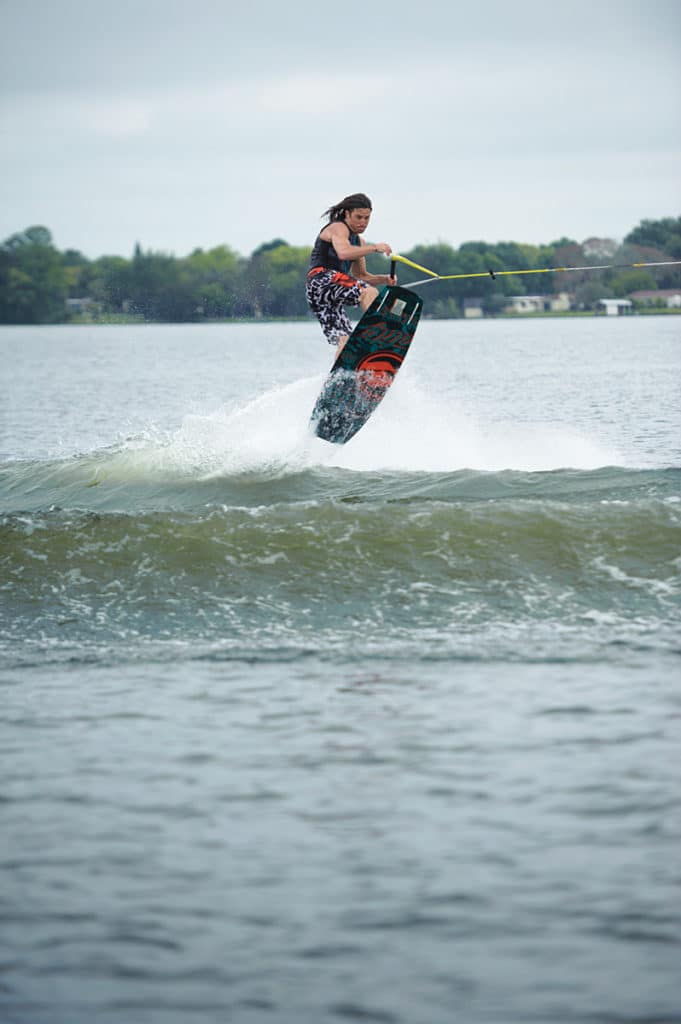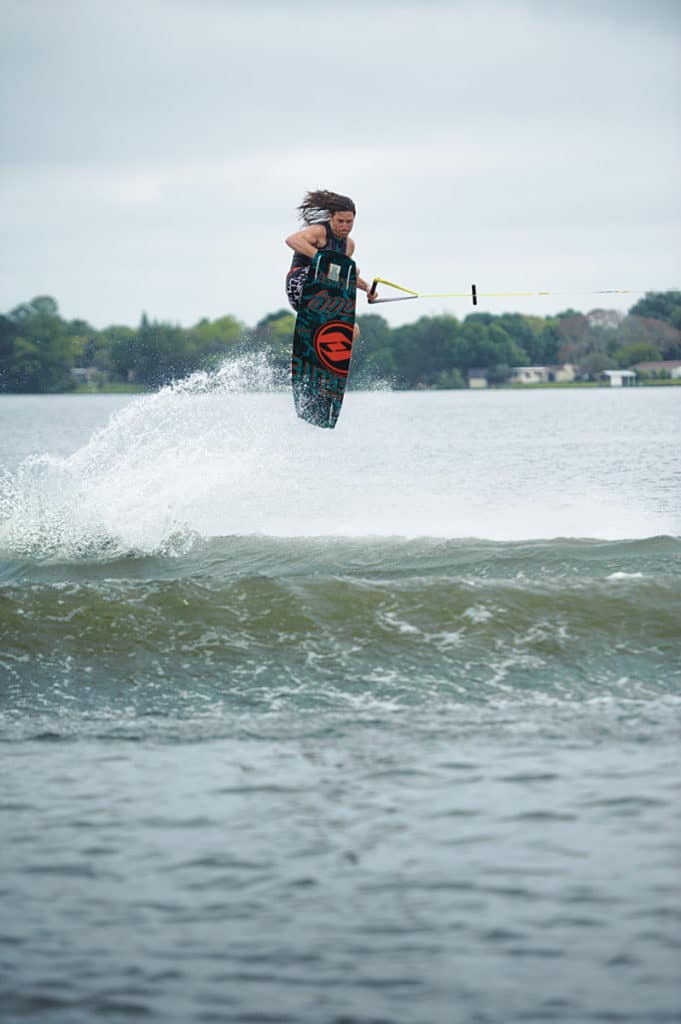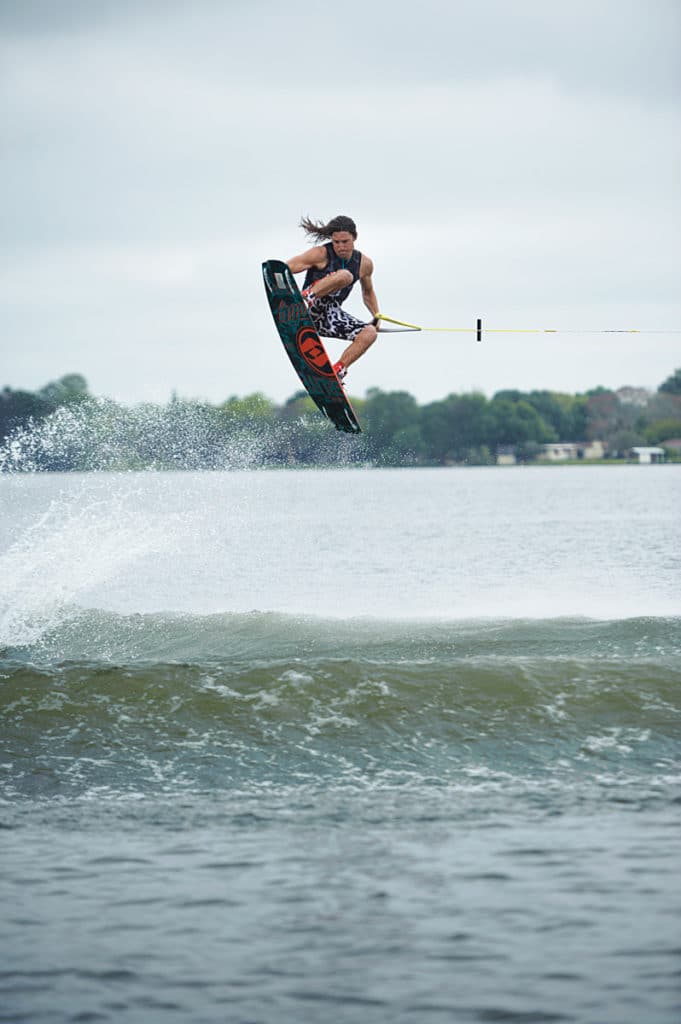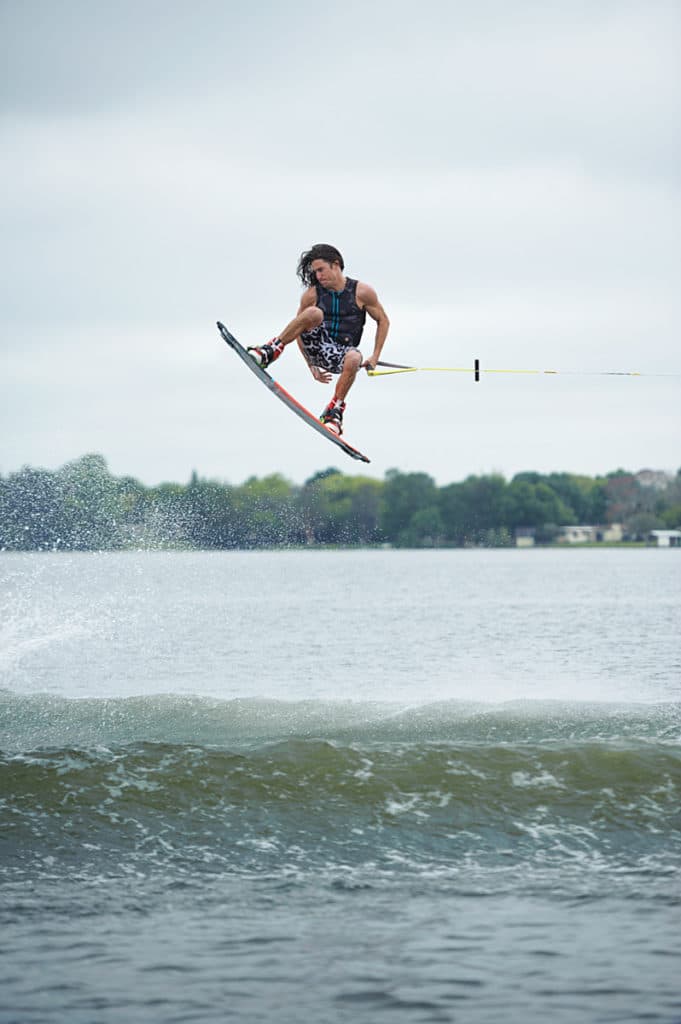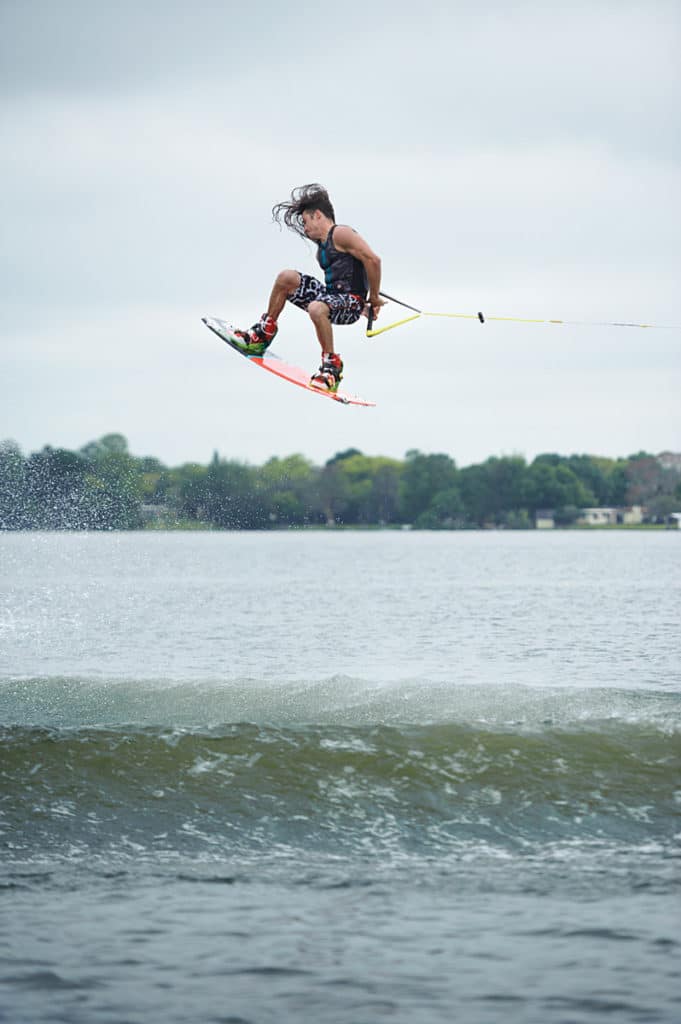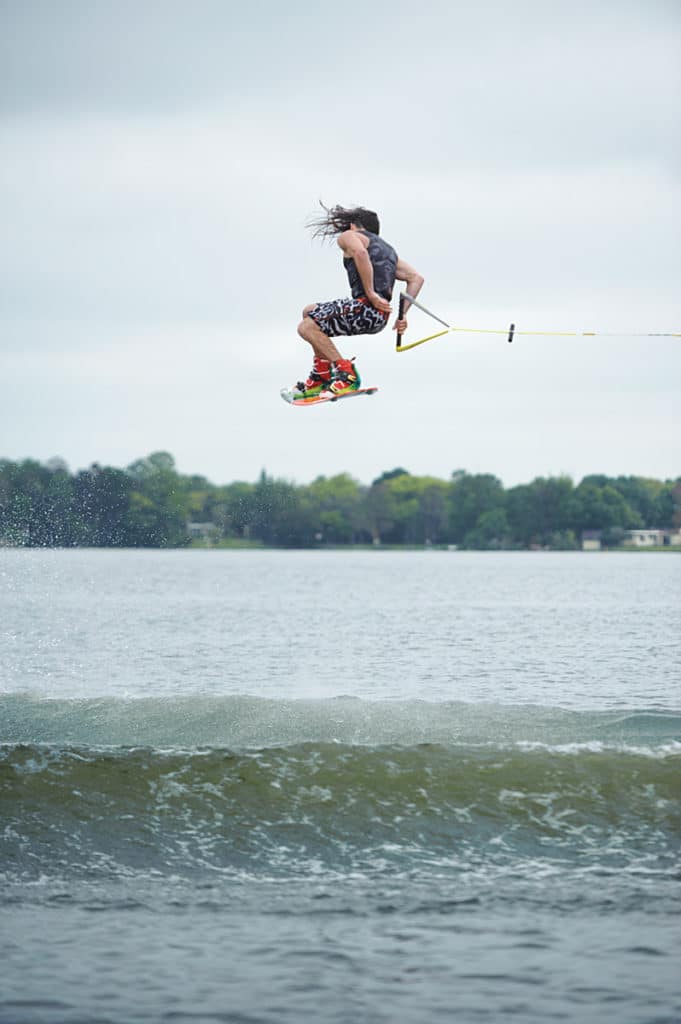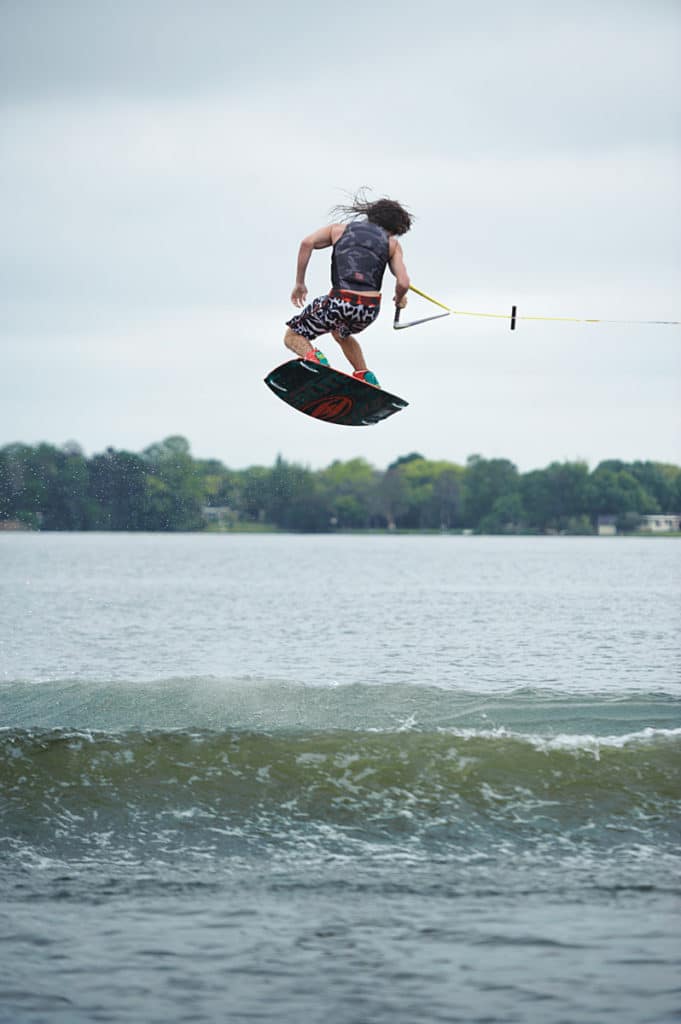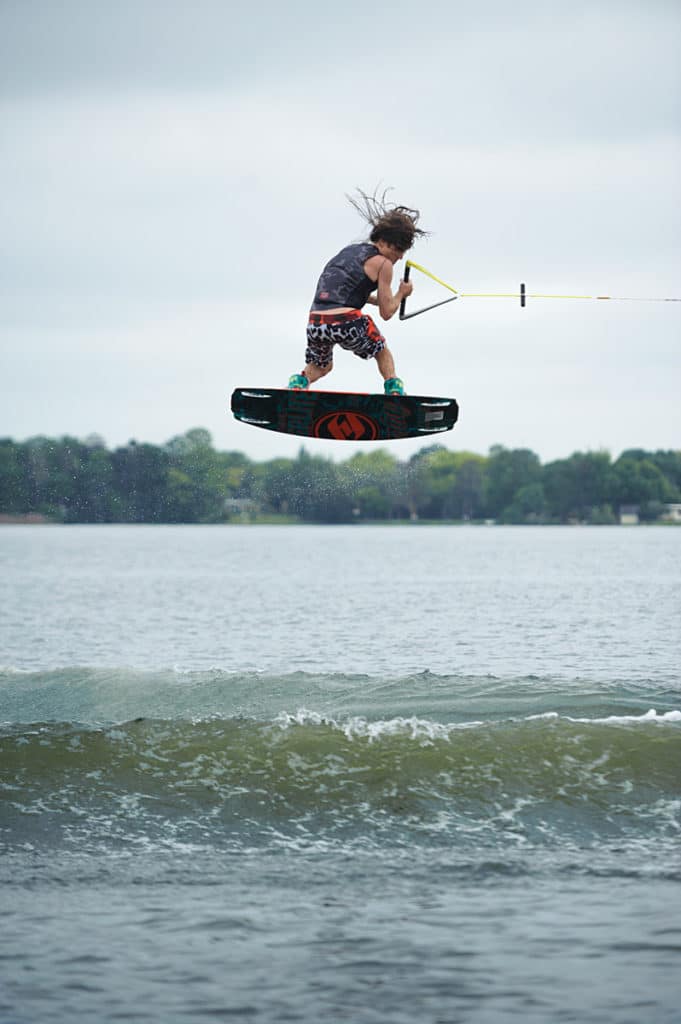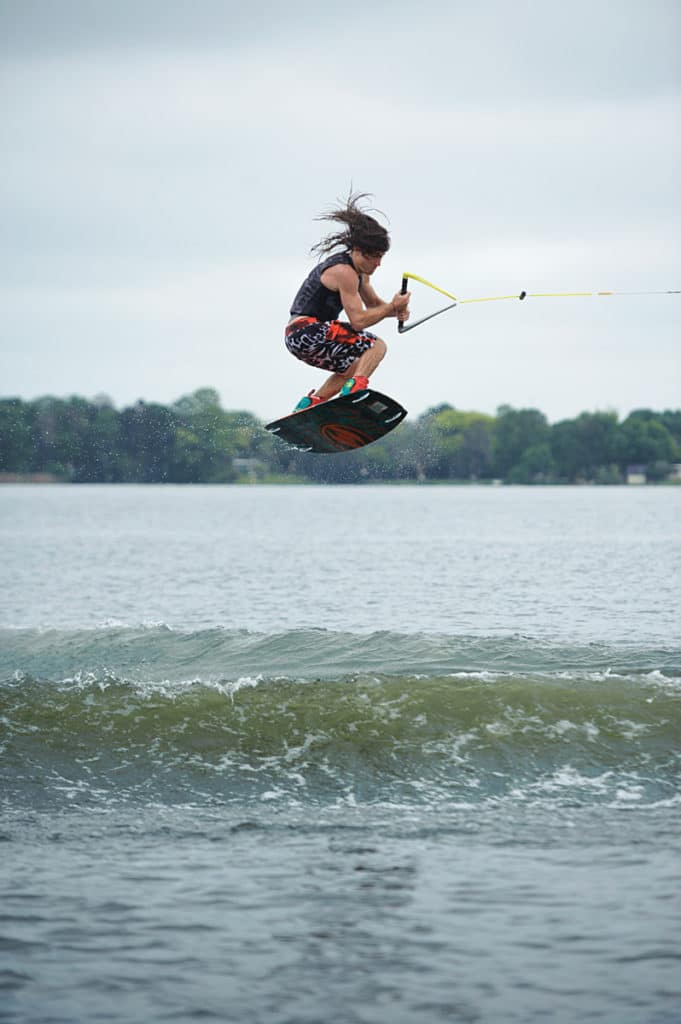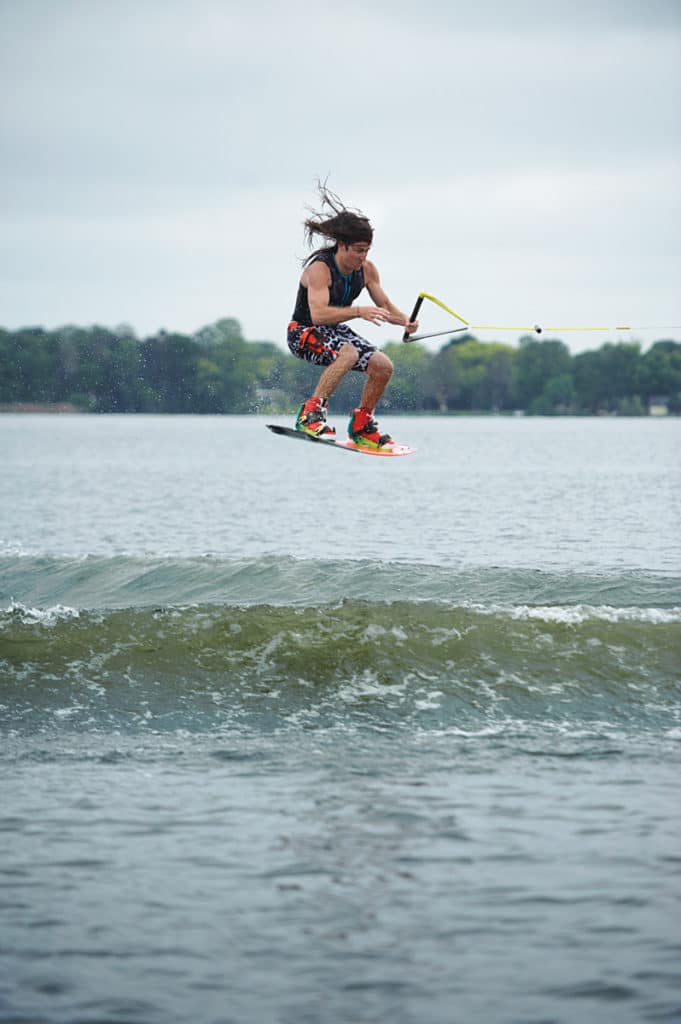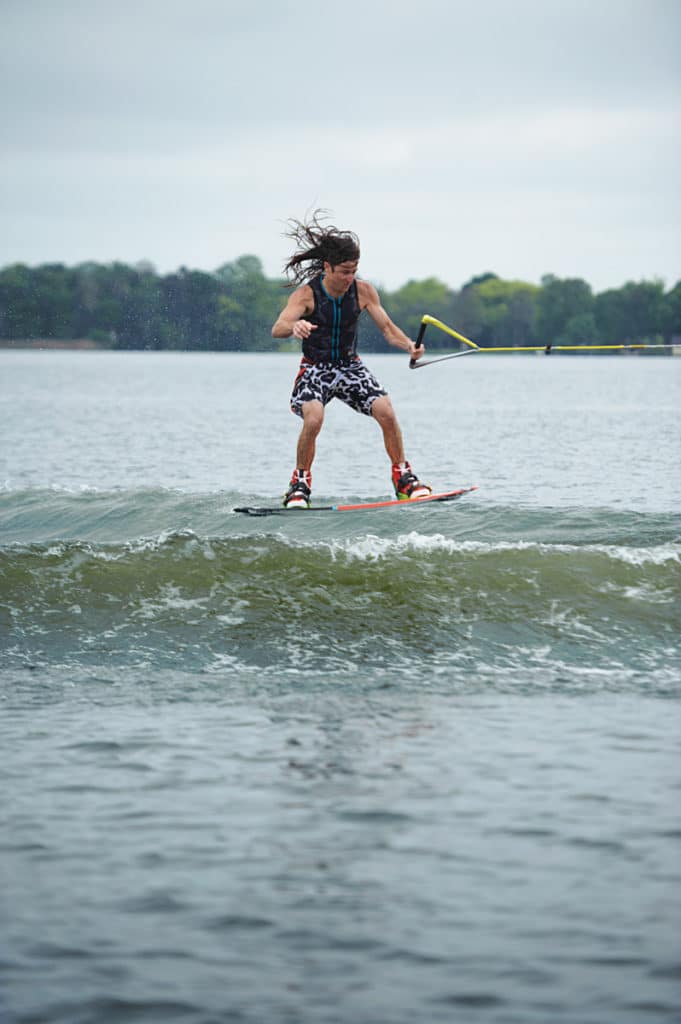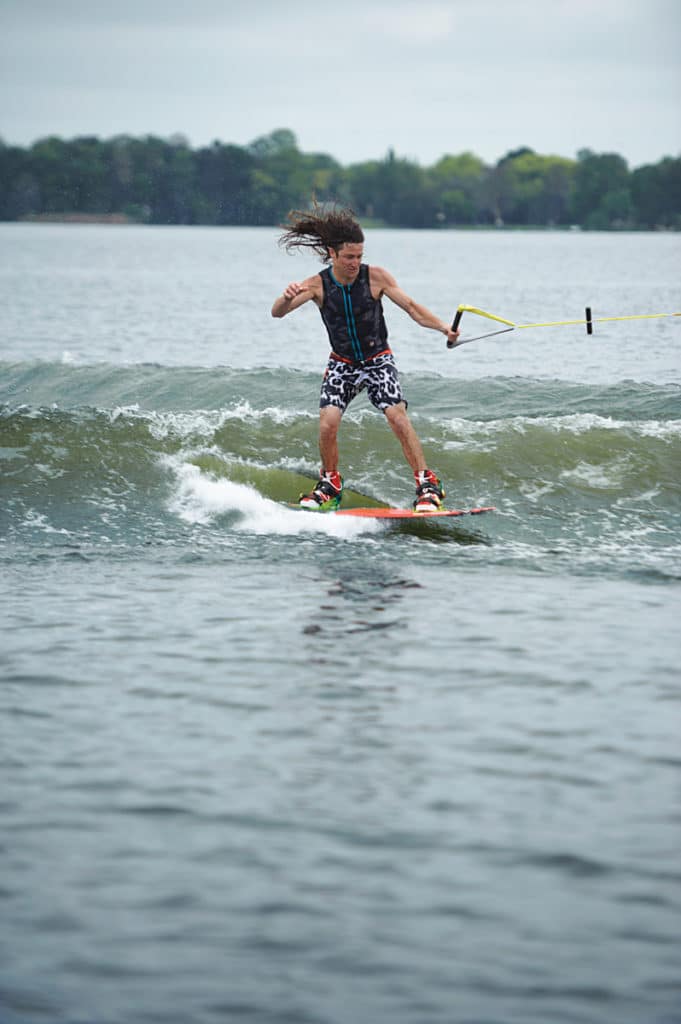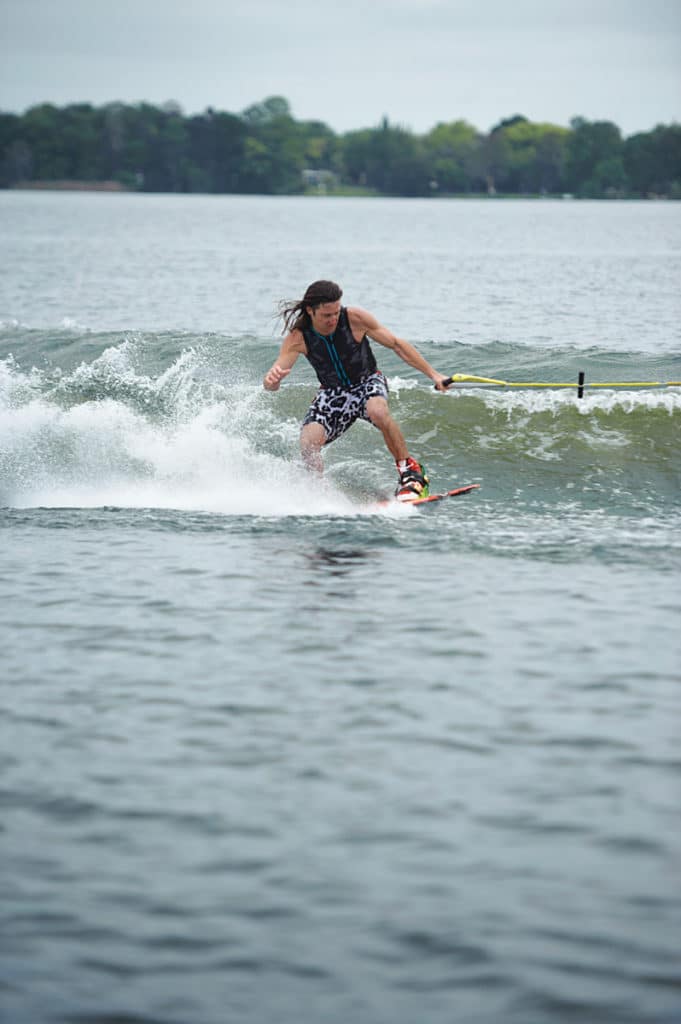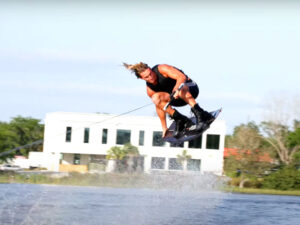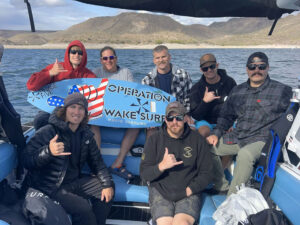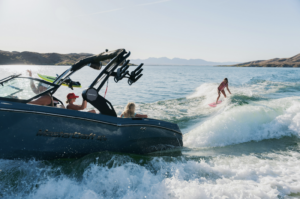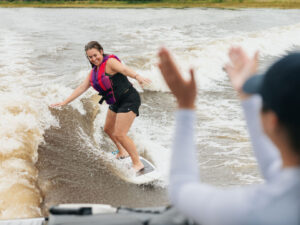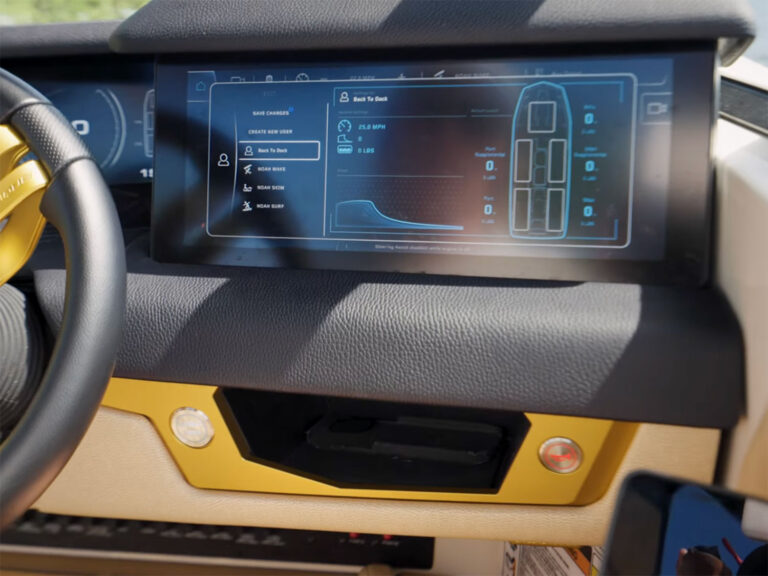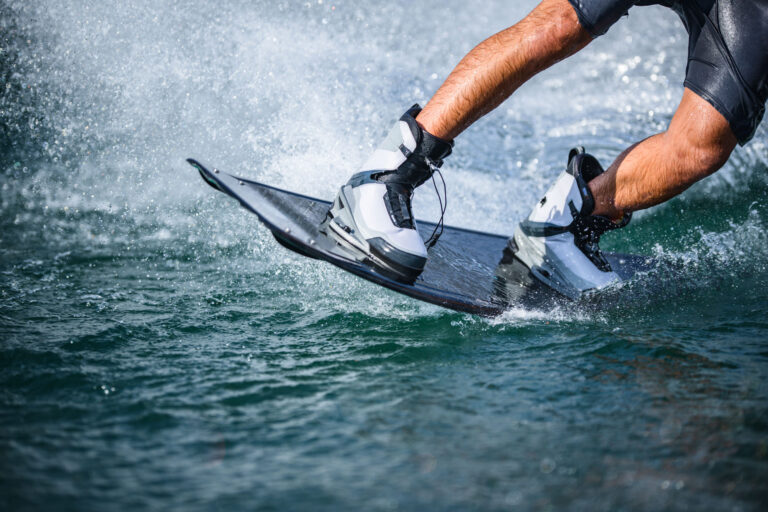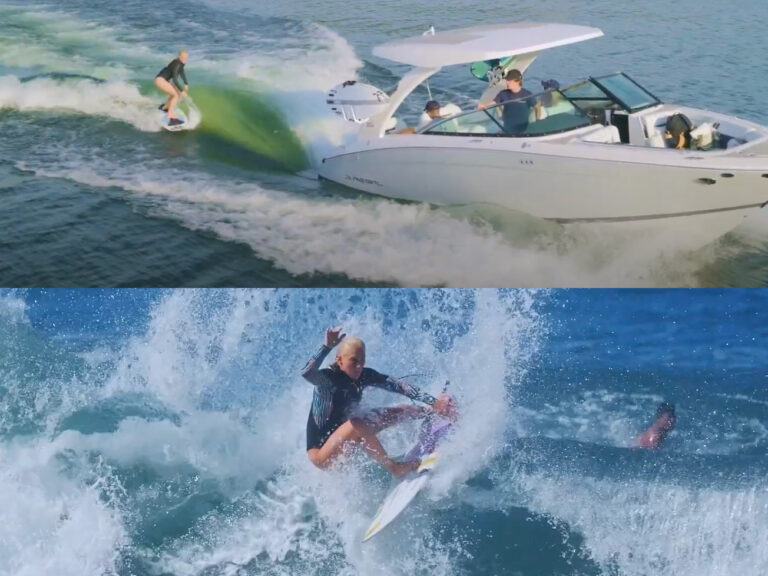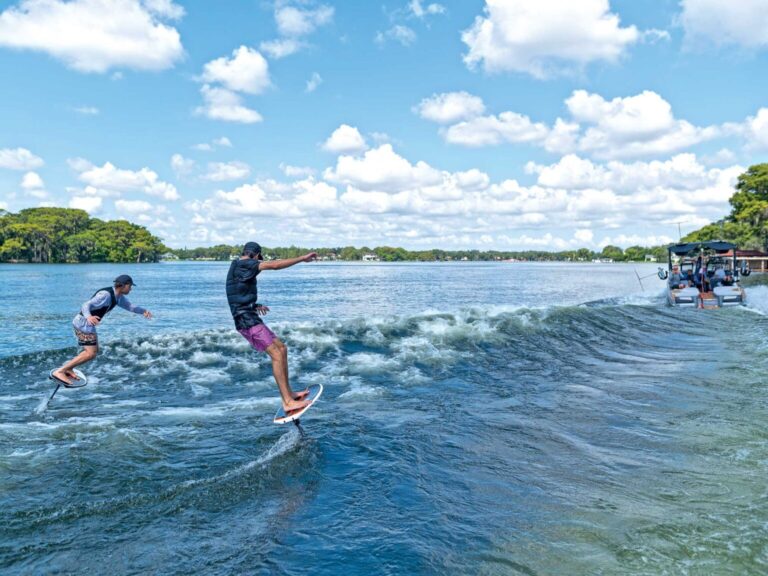How To: Learn a 540 | Words: Brandon Judd | Photos: Bill Doster & Rodrigo Donoso
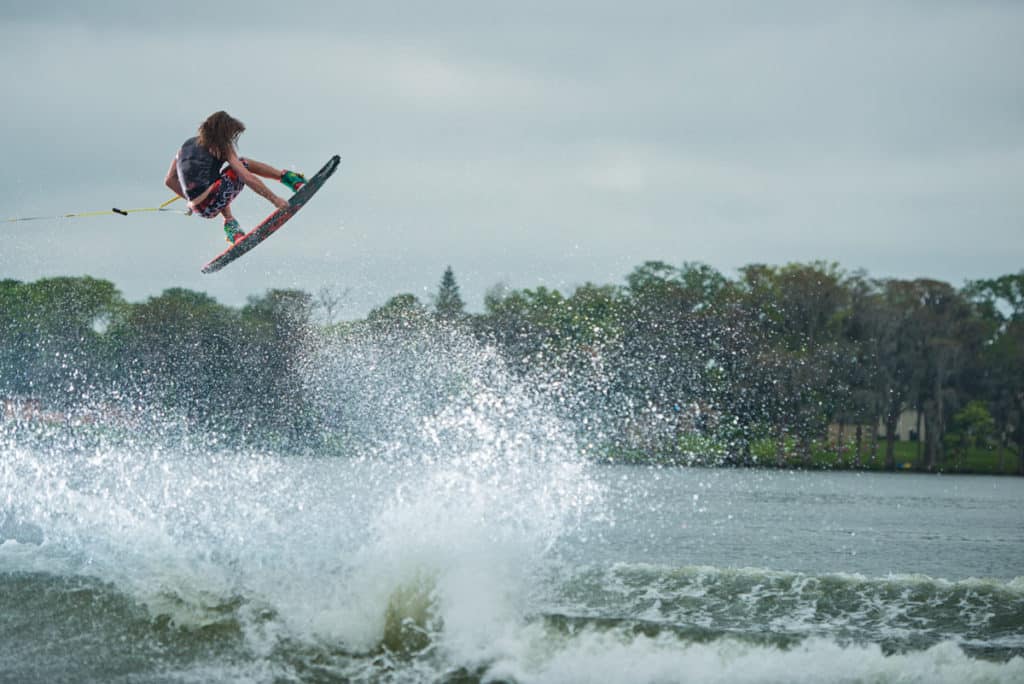
Keep ‘Em Separated
We all know you’re champing at the bit to land your first 540, but before you get too ahead of yourself here, let’s talk about your 360s. Yeah, maybe you can land them, but if your technique isn’t sound, then those flaws can creep into your 540 — significantly lengthening the learning process and leaving them inconsistent at best.
To be clear, we’re assuming that you’ve already landed either a heelside frontside 360, a toeside frontside 360 or both, and that you are comfortable enough with them to start attempting frontside 540s. If that’s the case, let’s take a quick look at your frontside 360s. You should be able to land your heelside frontside 360 easily, landing one-handed, with your eyes looking back toward the wake. You should not be landing two-handed with your eyes looking back at the boat. This will blur the line between the 360 and the 540, reinforcing your tendency to overrotate the 540 when you start trying them. Likewise, this principle should be applied to your toeside frontside 360s. To keep the 360 and 540 distinct, you should land your 360s blind, with one hand on the handle at impact. You may get cuffed or pass the handle only after the initial impact.
This is an important distinction because these frontside 540s have different breaks in momentum than your 360s do. When you are learning these 540s, you can’t think of them like a 360 plus a 180. They don’t function that way. Instead, their tempo is more like a 180 plus a 360. This is why an experienced rider will usually stop at 180 if the takeoff doesn’t feel right.
A few other prerequisites that are nice to have in your bag of tricks — but are not required — are grabbed and switch-stance variations of both 360s. These will give you complete control over the rotation and additional dexterity for the handle pass.
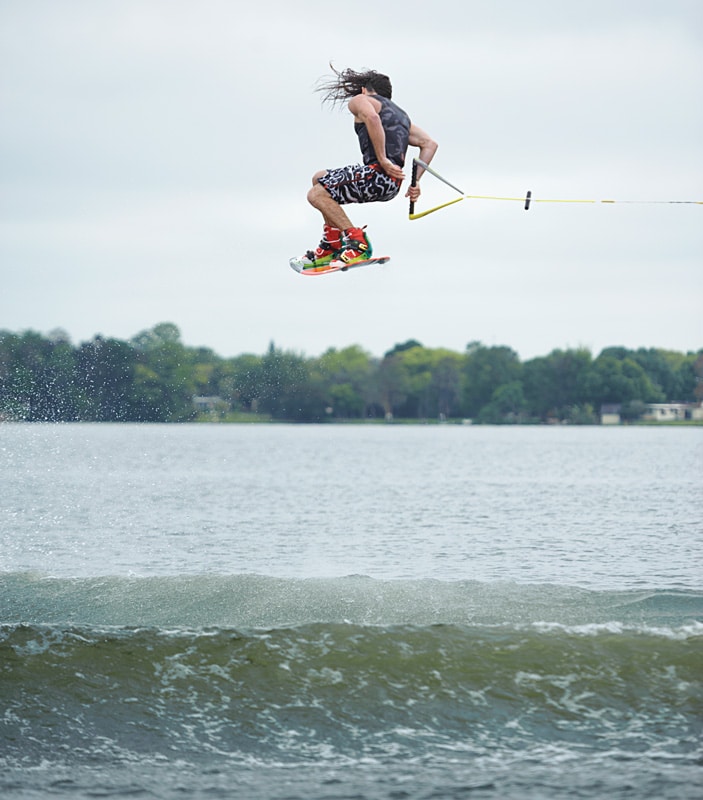
Heelside Frontside 540 with Jimmy LaRiche
As we just discussed, the tempo of a frontside 540 is a 180 plus a 360. So in the heelside frontside 540’s case, it would be a heelside frontside 180 plus a switch toeside backside 360. That’s the tricky part. You’ve probably never really thought about learning a switch toeside backside 360 before — but don’t worry, you won’t need to do this wake to wake yet. Ideally, though, you should experience it at some level — surface slide, ollie, one-wake or inside-out.
To break the ice, begin with a simple surface slide and start in the switch cuffed position. The key is to travel laterally across the middle of the wakes when you practice this slide. Be sure to overexaggerate, continuing your traveling direction over your toes when you finish. Jimmy LaRiche says, “Practicing these surface drills really helps you get the feel for the mechanics of the spin before you take it wake to wake.”
Pitching over onto your toes will make or break your landing. Whether you realize it or not, when you push off of the wake for a 180, you actually pitch your weight over in the air in anticipation of landing on your switch toeside edge. To practice pitching over onto your toes for the landing, Jimmy points out, “If you can do big 180s into the flats — or even a little past the wake — and land over your toes, then 540s should come easy.”
When you’re ready to take the 540 wake to wake, “Make sure you hold onto the handle with two hands all the way up the wake. You’ll also want to make sure you have completely left the wake before you start spinning; otherwise the rope will pull you out the front,” says Jimmy. “Once you are in the air and you’ve pitched over properly, you’ll want to spin a little faster than you did on your 360, and make sure when you come around to absorb the landing with your legs and keep your chest toward the shore.”
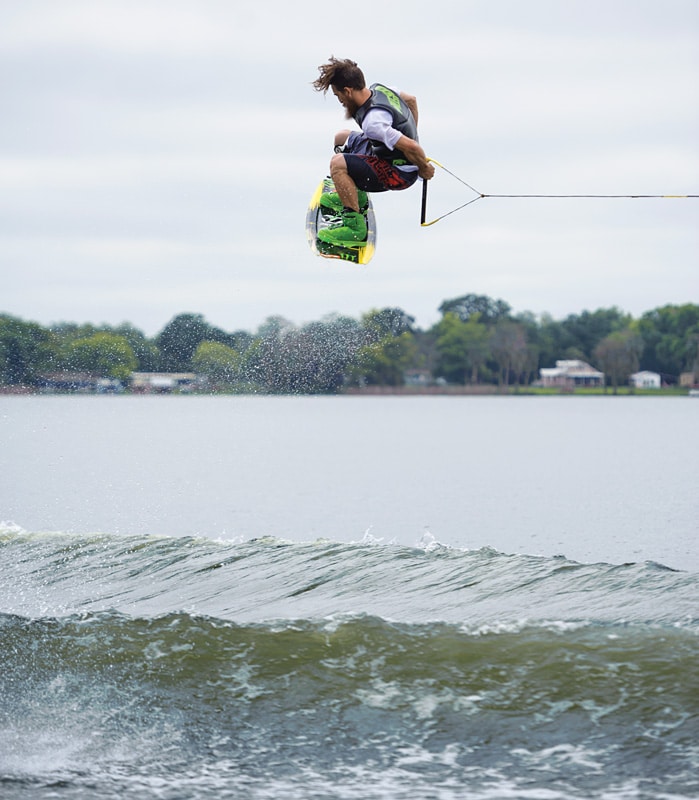
Toeside Frontside 540 with Shane Bonifay
Like with your heelside 540, the tempo of the toeside 540 should be broken into two parts: a toeside frontside 180 and a switch heelside backside 360. Practicing these pieces individually in a lower-risk environment will noticeably expedite the learning process.
The easiest way to get a few switch backside 360s under your belt is to first practice some inside-out switch backside 360s at slow surface sliding speeds. Start with an inside-out handle pass backside 180 that immediately flows into another 180 on the surface without pause. Then start landing later and later into the trick — impact at 270 and slide the remaining 90 degrees, and so on — and you’ll be landing inside-out switch heelside backside 360s before you know it.
Once that rotation feels comfortable, it’s time to try some toeside 540s wake to wake. Shane Bonifay says, “The mind-set I’m in during my approach is to make sure I’m coming into the wake with a smooth edge. Not too aggressive or wild, just smooth and progressive to keep the handle pass consistent. If you are jerking the rope around while edging in, the handle will get yanked around when you try to pass it.”
At the wake, stand tall by bringing your hips forward and pushing all of the bend out of your legs. Keep two hands on the handle all the way through your takeoff, and avoid the tendency to start spinning too early. Shane says, “Don’t think toeside 540; think big, clean toeside 180 followed by a handle pass and — bam! — 540.” Once you reach 180 at the apex of the trick, continue that momentum into the handle pass. At this point it should feel just like your inside-out switch heelside backside 180s. After you pass the handle, the trick should come around naturally. Shane says, “Spot your landing when you come around and before you know it, you’re landing and riding away from your first toeside 540.”
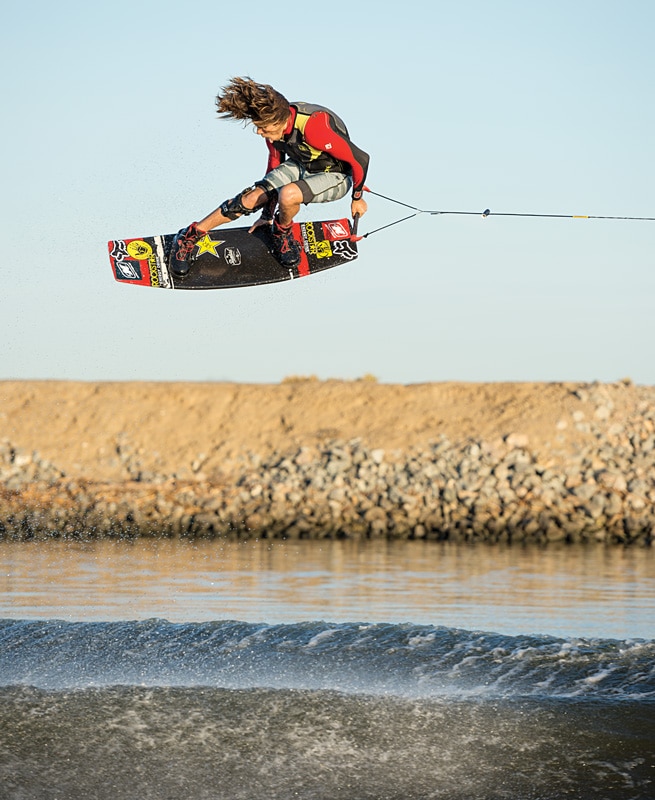
Grab It Like You Mean It with Josh Twelker
Once your frontside 540s are consistent and comfortable, it’s time to start grabbing them. For this section, we decided to bring in of one of our favorite 540 grabbers, Josh Twelker, and let him enlighten you on the mechanics of grabbing your board properly. “Before trying to grab on a 540, you should practice the grab on a 180 and 360,” says Josh. “Once it becomes instinctive, and you have found the most comfortable way to grab your board, it should naturally carry over to your 540.”
Sometimes riders can get a little anxious and unintentionally alter their axis. To avoid this, Josh says, “I like to tell people to bring the grab to you. Do this by bringing your knees into your chest rather than breaking at the waist to reach for the grab. Don’t rush it either. Rushing the spin can oftentimes throw off your axis, making the grab hard to get. Think: Pop first, then grab, then complete your rotation on the way down.”
To keep it all proper, Josh explains, “Grabbing properly means avoiding what is easy. Grabbing the corners or around the boot might be easier, but is definitely not as legit. Concentrate on keeping your hand either in between your feet or in the center of the tip or tail. It makes the trick look so much cleaner. Once you are comfortable grabbing the board in the right place, try adding some creativity by poking it out.”
Once you can grab it properly, switching up the timing of the grab can dramatically affect the look and style of the trick. Josh says, “Grabbing late, after the handle pass, is definitely a cool variation, but it can be much harder than early grabs. The key to getting a good late grab and poke is to advance your hips and body toward the boat. This creates some slack in the line, making it easier to get the late grab right after the first 360.”
Armed with all of this knowledge, you should be able to take to the water and produce the most legit 540s on the lake. Get to it!
